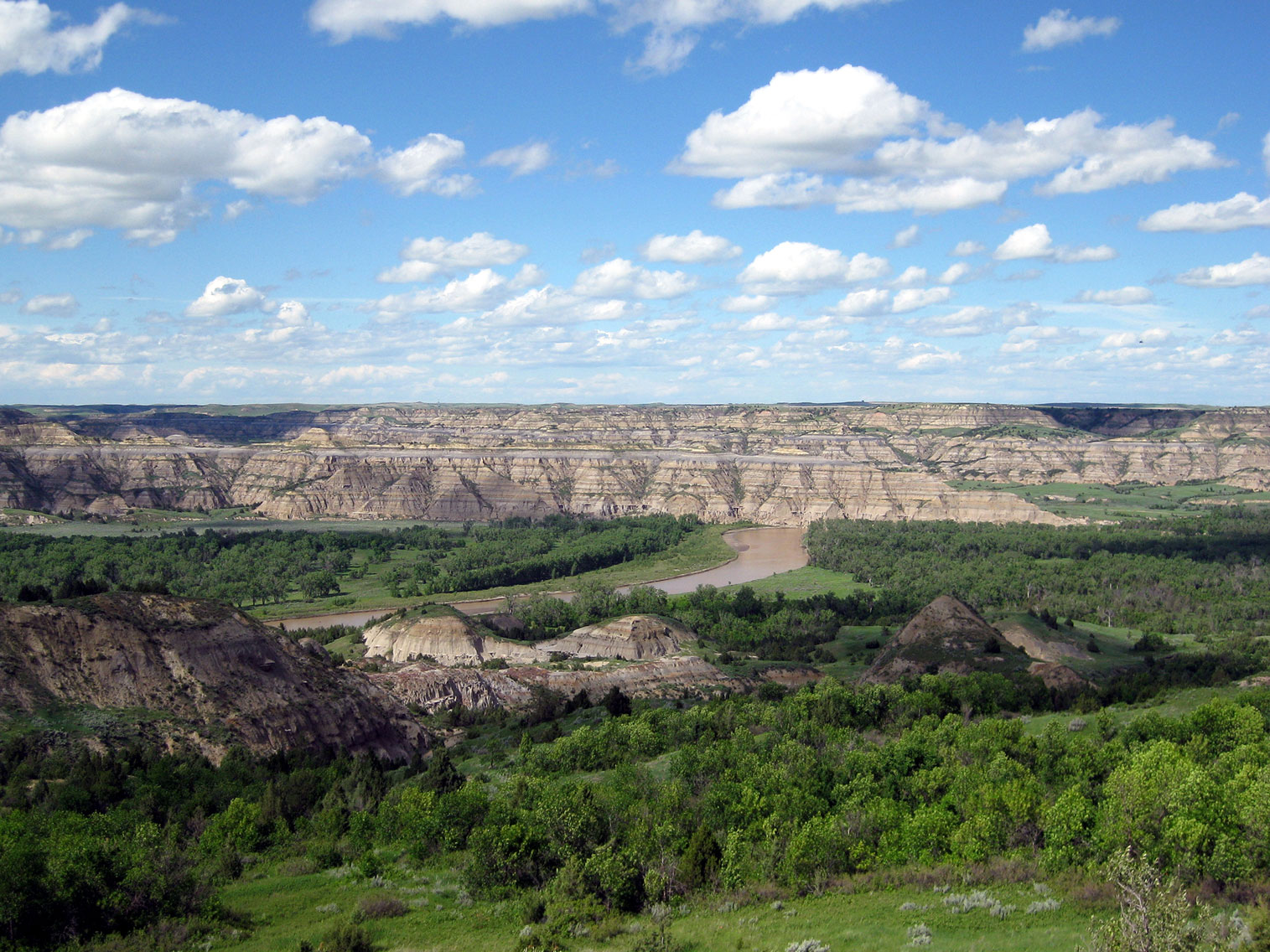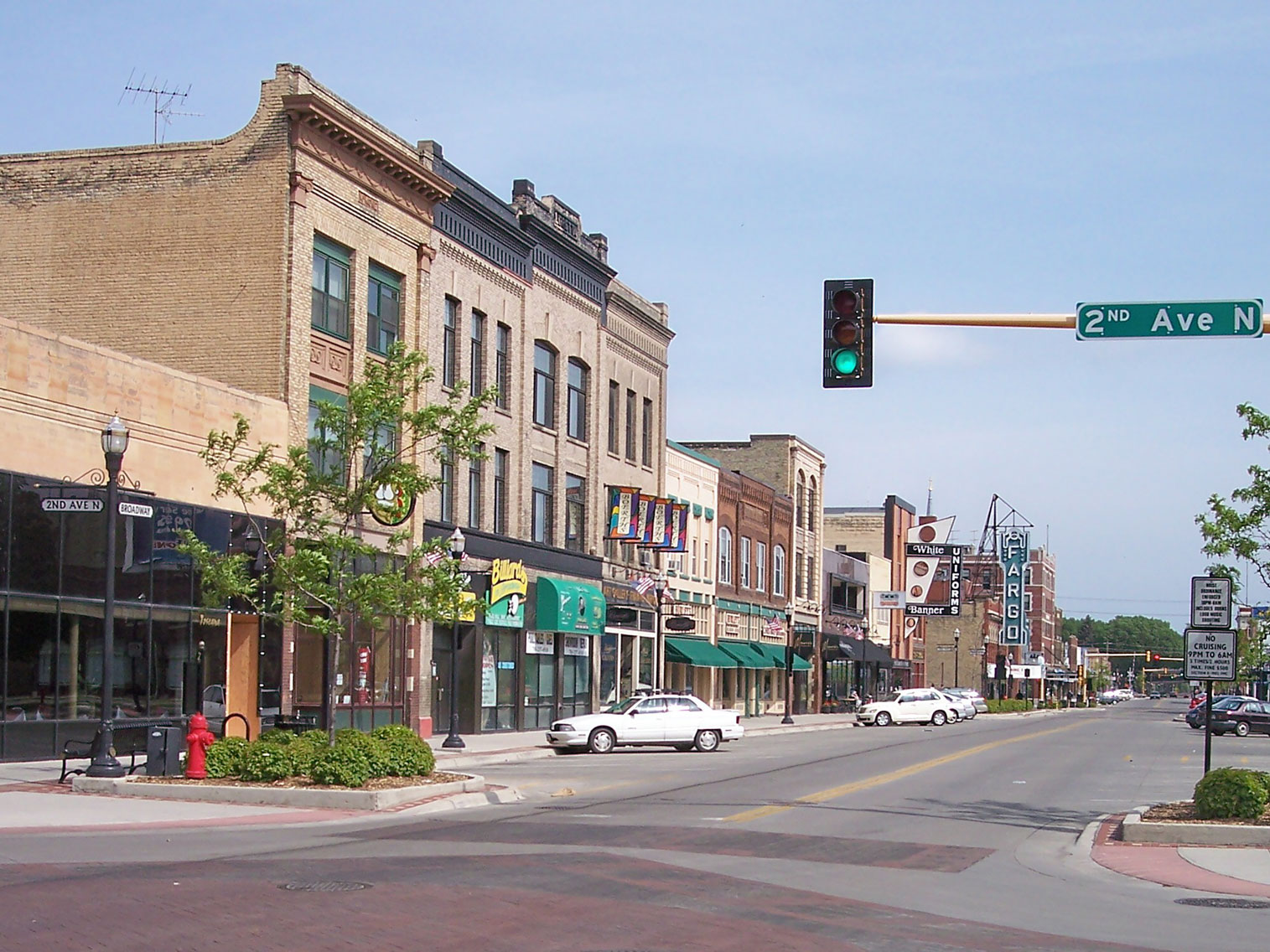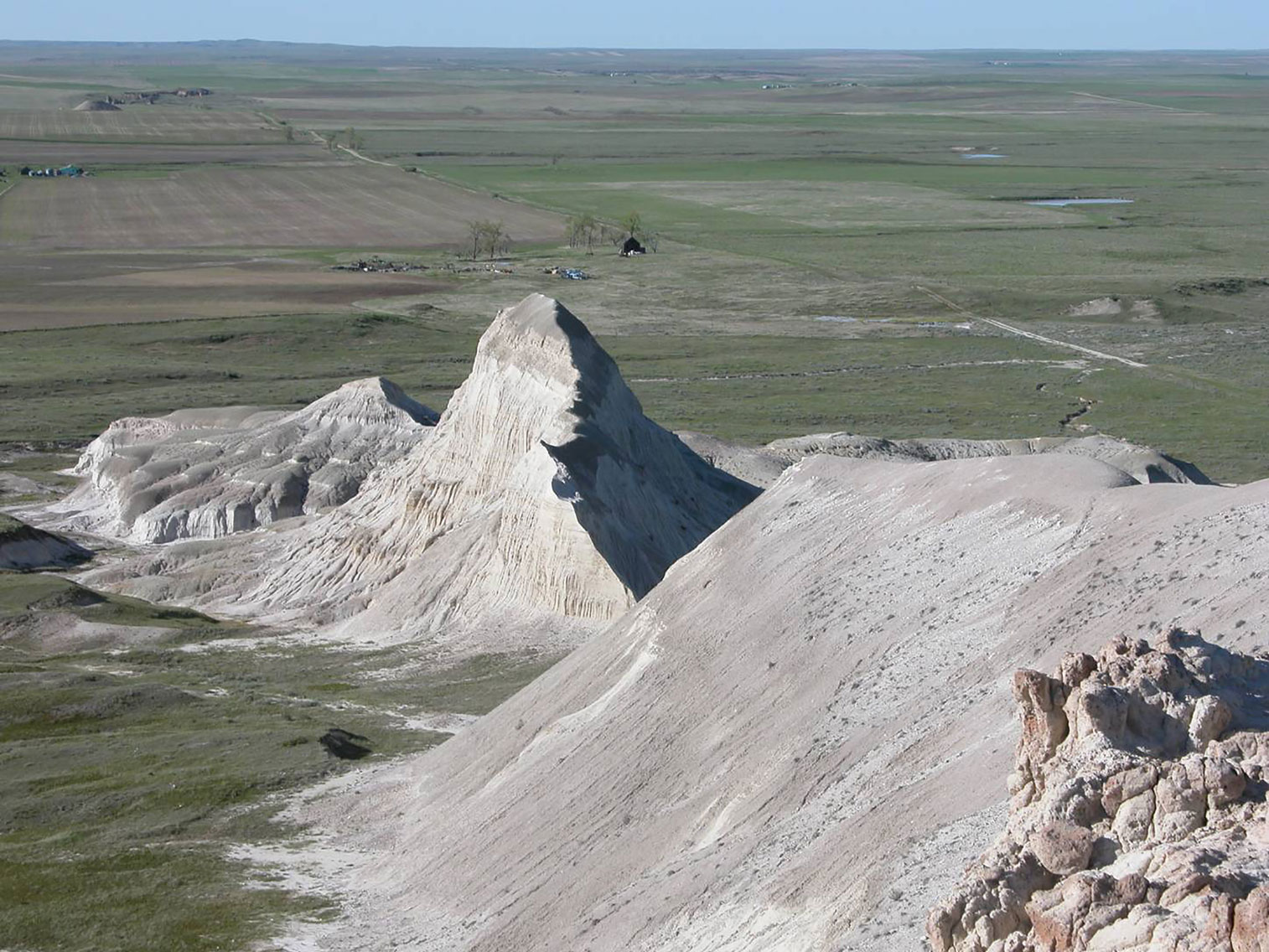North Dakota Travel Guide
State in the upper Midwestern region of the country named after the indigenous Lakota and Dakota Sioux, with capital Bismarck while the largest city is Fargo, which accounts for nearly a fifth of the state's population; The state is part of the Great Plains region, with broad prairies, steppe, temperate savanna, badlands, and farmland being defining characteristics
Places to See in North Dakota

NPS/Mark Hoffman, Public domain, via Wikimedia Commons; Image Size Adjusted
Theodore Roosevelt National Park
National park honoring U.S. President Theodore Roosevelt comprises three geographically separated areas of badlands in western North Dakota

Tim Kiser (w:User:Malepheasant), CC BY-SA 2.5, via Wikimedia Commons; Image Size Adjusted

Bjr97543 at English Wikipedia, Public domain, via Wikimedia Commons; Image Size Adjusted
Landmarks and Landscapes
Knife River Indian Villages National Historic Site · White Butte · World's Largest Buffalo
North Dakota is a state in the upper Midwestern region of the country. It is named after the indigenous Lakota and Dakota Sioux, who historically dominated the territory and remain a large community. The capital is Bismarck while the largest city is Fargo, which accounts for nearly a fifth of the state's population; both cities are among the fastest-growing in the U.S., although half of all residents live in rural areas. The state is part of the Great Plains region, with broad prairies, steppe, temperate savanna, badlands, and farmland being defining characteristics.
What is now North Dakota was inhabited for thousands of years by various Native American tribes, including the Mandan, Hidatsa, and Arikara along the Missouri River; the Ojibwa and Cree in the northeast; and several Sioux groups (the Assiniboine, Yankton, Wahpeton, and Teton) across the rest of the state. European explorers and traders first arrived in the early 18th century, mostly in pursuit of lucrative furs. The United States acquired the region in the early 19th century, gradually settling it. The Dakota Territory, established in 1861, became central to American pioneers, with the Homestead Act of 1862 precipitating significant population growth and development.
North Dakota was admitted to the Union on November 2, 1889, along with neighboring South Dakota, as the 39th and 40th states. Statehood marked the gradual winding down of the pioneer period, with the state fully settled by around 1920. Beginning in the mid 20th century, North Dakota's rich natural resources became more critical to economic development; into the 21st century, oil extraction from the Bakken formation in the northwest has played a major role in the state's prosperity.
The western half of the state consists of the hilly Great Plains as well as the northern part of the Badlands, which are to the west of the Missouri River. The state's high point, White Butte at 3,506 feet (1,069 m), and Theodore Roosevelt National Park are in the Badlands. The Missouri River forms Lake Sakakawea, the third largest artificial lake in the United States, behind the Garrison Dam.
The central region of the state is divided into the Drift Prairie and the Missouri Plateau. The eastern part of the state consists of the flat Red River Valley, the bottom of glacial Lake Agassiz. Devils Lake, the largest natural lake in the state, is also found in the east.
Outdoor attractions like the 144-mile (232-km) Maah Daah Hey Trail and activities like fishing and hunting attract visitors. The state is known for the Lewis & Clark Trail and being the winter camp of the Corps of Discovery. Areas popular with visitors include Theodore Roosevelt National Park in the western part of the state.
North Dakota's major fine art museums and venues include the Chester Fritz Auditorium, Empire Arts Center, the Fargo Theatre, North Dakota Museum of Art, and the Plains Art Museum.
This article uses material from the Wikipedia article "North Dakota" which is released under the Creative Commons Attribution-Share-Alike License 3.0